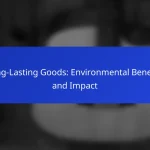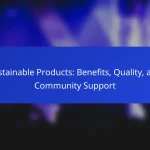What are the best biodegradable materials for packaging?
The best biodegradable materials for packaging include PLA, PHA, starch-based materials, paper, and compostable films. These materials are designed to break down naturally over time, reducing environmental impact compared to traditional plastics.
PLA (Polylactic Acid) packaging
PLA is derived from renewable resources like corn starch or sugarcane, making it a popular choice for eco-friendly packaging. It is compostable in industrial facilities and can decompose within a few months under the right conditions.
However, PLA has limitations in terms of heat resistance and moisture barrier properties, which may affect its suitability for certain applications. It is best used for items like food containers and disposable cutlery.
PHA (Polyhydroxyalkanoates) packaging
PHA is produced by microbial fermentation of organic materials and is fully biodegradable in various environments, including marine settings. This makes it a versatile option for packaging that may end up in different waste streams.
While PHA offers excellent biodegradability, it is generally more expensive to produce than PLA. Its applications include flexible films and coatings, making it suitable for food packaging and agricultural films.
Starch-based materials
Starch-based materials are made from natural starch sources, such as potatoes or corn, and can be blended with other biodegradable polymers. They are often used for items like packing peanuts and disposable tableware.
These materials are compostable and typically break down within a few weeks in composting conditions. However, they may not perform well in high-moisture environments, limiting their use in certain packaging applications.
Paper and cardboard alternatives
Paper and cardboard alternatives are biodegradable and recyclable, making them a sustainable choice for packaging. They can be treated with biodegradable coatings to enhance moisture resistance while maintaining their eco-friendly properties.
These materials are widely used for boxes, bags, and wrapping paper. When sourcing paper products, look for certifications like FSC or SFI to ensure responsible forestry practices.
Compostable films
Compostable films are designed to break down in composting environments, offering an alternative to traditional plastic films. They are often made from materials like PLA or PHA and are suitable for food packaging and agricultural applications.
When selecting compostable films, check for certifications such as ASTM D6400 or EN 13432, which indicate compliance with compostability standards. Proper disposal in composting facilities is crucial for achieving the intended environmental benefits.
How do biodegradable materials compare to traditional plastics?
Biodegradable materials break down more quickly than traditional plastics, which can take hundreds of years to decompose. This key difference makes biodegradable options more environmentally friendly, as they reduce long-term waste in landfills and oceans.
Decomposition time differences
Biodegradable materials typically decompose within a few months to a couple of years, depending on environmental conditions. In contrast, traditional plastics can persist for several decades or even centuries, leading to significant accumulation in the environment.
For instance, polylactic acid (PLA), a common biodegradable plastic, can break down in industrial composting facilities in about 90 days. However, under natural conditions, this process may take longer.
Environmental impact analysis
The environmental impact of biodegradable materials is generally lower than that of traditional plastics. Biodegradable options reduce pollution and the risk of harming wildlife, as they break down into natural substances.
However, the production of biodegradable materials can still have environmental costs, such as land use for crops and energy consumption. It’s essential to consider the entire lifecycle, from production to disposal, to fully understand their impact.
Cost comparison
Biodegradable materials often have a higher upfront cost compared to traditional plastics, primarily due to the production processes and raw materials used. Prices can vary widely, but biodegradable options may be 20-50% more expensive than conventional plastics.
Despite the higher initial costs, businesses and consumers may find value in the long-term benefits, such as reduced waste management expenses and improved brand image associated with sustainability.
What are the applications of biodegradable materials in e-commerce?
Biodegradable materials are increasingly used in e-commerce for sustainable practices, helping to reduce environmental impact. These materials are applied in various areas, including shipping, product packaging, and promotional materials, to enhance eco-friendliness and appeal to environmentally conscious consumers.
Shipping materials
Biodegradable shipping materials, such as paper-based void fill or compostable bubble wrap, are designed to replace traditional plastic options. They provide adequate protection for products during transit while breaking down naturally after disposal. When selecting shipping materials, consider the durability required for your products and the environmental benefits of using biodegradable options.
Using biodegradable shipping materials can also improve your brand image, as customers increasingly prefer companies that prioritize sustainability. Ensure that your shipping partners are equipped to handle these materials properly to maximize their environmental benefits.
Product packaging
In e-commerce, biodegradable product packaging includes items like compostable bags, boxes made from recycled paper, and plant-based films. These alternatives not only protect products but also reduce waste in landfills. When choosing biodegradable packaging, look for certifications that guarantee the materials will decompose effectively in appropriate conditions.
Consider the balance between packaging strength and biodegradability to ensure your products arrive safely while minimizing environmental impact. Offering clear disposal instructions can also encourage customers to dispose of packaging responsibly.
Promotional materials
Promotional materials, such as biodegradable flyers, business cards, and promotional giveaways, can enhance your marketing efforts while supporting sustainability. These materials can be made from recycled paper or plant-based substances that decompose over time. When designing promotional materials, focus on creating engaging content that resonates with your audience while using eco-friendly materials.
Utilizing biodegradable promotional materials can set your brand apart in a crowded market. Ensure that your messaging emphasizes your commitment to sustainability, which can attract customers who value environmentally responsible practices.
What certifications should biodegradable materials have?
Biodegradable materials should have certifications that verify their environmental claims and ensure they meet specific standards for decomposition. Key certifications include ASTM D6400, EN 13432, and USDA Biobased Product certification, each serving different markets and regulatory requirements.
ASTM D6400 certification
ASTM D6400 certification is a standard for compostable plastics in the United States. It ensures that materials will break down in a composting environment within a specified time frame, typically around 90 days. Products certified under this standard must meet criteria for biodegradability and disintegration.
When considering ASTM D6400, look for the certification mark on products. This mark indicates compliance with the standard, which is crucial for products intended for commercial composting facilities.
EN 13432 certification
EN 13432 certification is a European standard that evaluates the compostability of packaging materials. This certification requires that materials decompose into carbon dioxide, water, and biomass within a specific time frame, generally within 12 weeks in industrial composting conditions.
For businesses in Europe, obtaining EN 13432 certification can enhance marketability and compliance with EU regulations on packaging waste. Ensure that the products you choose carry this certification if you are targeting environmentally conscious consumers in Europe.
USDA Biobased Product certification
The USDA Biobased Product certification identifies products made from renewable resources. This certification indicates the percentage of biobased content, which can range from low to high, depending on the product. It aims to promote the use of renewable materials in various applications.
For manufacturers, obtaining USDA certification can provide a competitive edge in the market. It is particularly beneficial for products intended for consumers who prioritize sustainability and environmental responsibility.
What are the challenges of using biodegradable materials?
Biodegradable materials face several challenges, including limited composting infrastructure, varying degradation rates, and contamination issues. These factors can hinder their effectiveness and acceptance in mainstream applications.
Limited composting infrastructure
Many regions lack the necessary facilities to properly compost biodegradable materials. Without adequate composting systems, these materials may end up in landfills, where they do not decompose effectively. This limitation can reduce the environmental benefits that biodegradable options are supposed to provide.
Varying degradation rates
Biodegradable materials can degrade at different rates depending on environmental conditions such as temperature, humidity, and microbial activity. Some materials may break down quickly in optimal conditions, while others might take months or even years. Understanding these rates is crucial for selecting the right biodegradable option for specific applications.
Contamination issues
Contamination with non-biodegradable materials can complicate the recycling and composting processes. For example, if biodegradable plastics are mixed with traditional plastics, it can lead to increased costs and inefficiencies in waste management. Educating consumers and businesses about proper disposal methods is essential to mitigate this issue.






